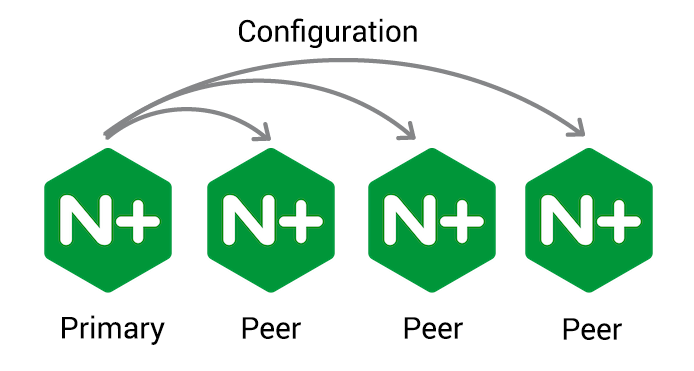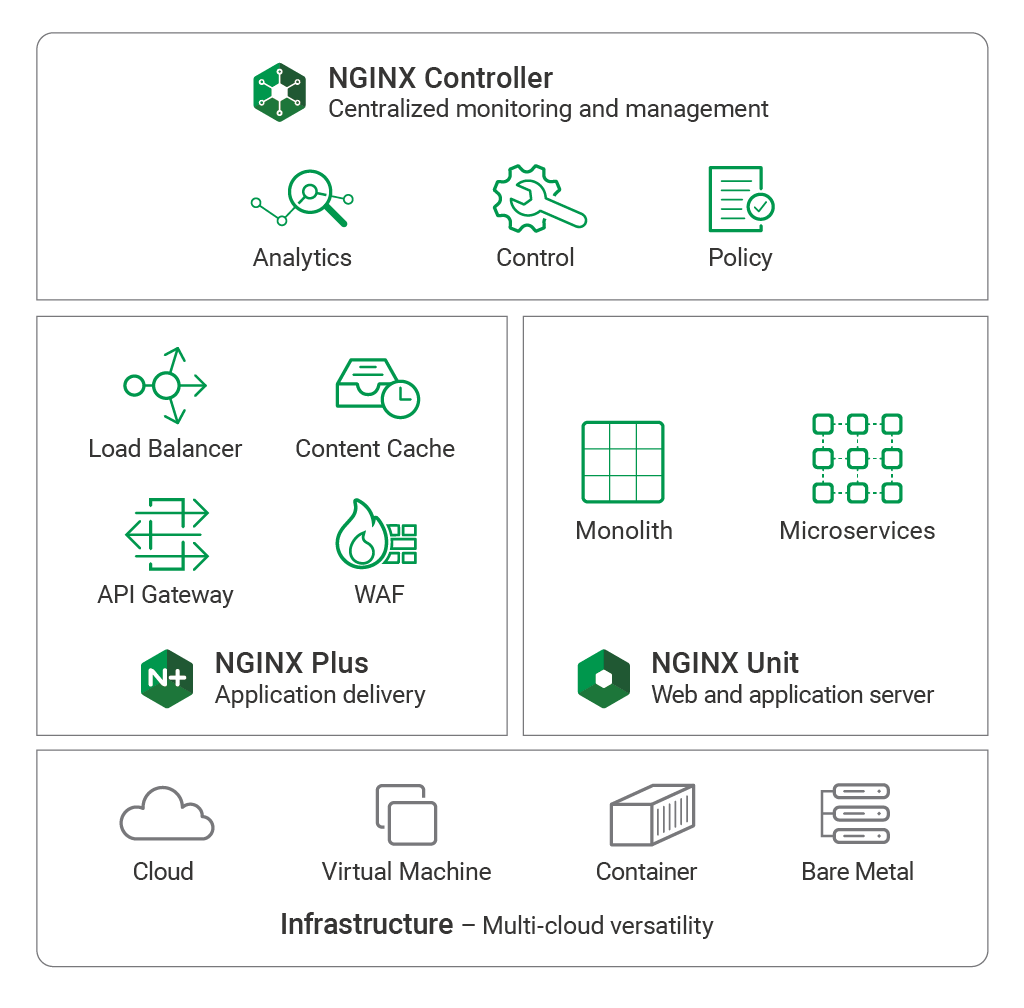[Editor –
- The NGINX ModSecurity WAF module for NGINX Plus officially went End-of-Sale as of April 1, 2022 and is transitioning to End-of-Life effective March 31, 2024. For more details, see F5 NGINX ModSecurity WAF Is Transitioning to End-of-Life on our blog.
- NGINX Controller is now F5 NGINX Management Suite.]
]
neophile (n): an enthusiast for what is new or novel
What was most popular in the NGINX blog this year? Looking at our top blog posts, we see that new NGINX Plus releases, microservices, security, and load balancing are all big hits, along with the NGINX Application Platform.
1. NGINX Plus R12
The NGINX Plus R12 release was packed with features, including the general availability (GA) release of the NGINX Javascript module (formerly called nginScript), enhanced caching, health check improvements, new statistics for reporting, and the ability to script configuration pushes to additional servers. The R12 release post was our #1 post of the year, viewed twice as many times as the next blog post on the list.

Four other release or launch blog posts were also among our Top 10 in a busy year here at NGINX. We also released NGINX Plus R13, NGINX Plus R14, and the NGINX Ingress Controller. In addition, at our 2017 annual conference in September, nginx.conf, we launched – that is, demonstrated and publicly announced – NGINX Unit and NGINX Controller. Both are in beta now, and they will reach GA in the new year.
2. Microservices and API Gateways
The second highest‑ranking blog post was #2 in a two‑part series from our friends at Mashape, Microservices & API Gateways, Part 2: How Kong Can Help.
The post is adapted from a presentation by Marco Palladino of Mashape.com. You can view a recording of the presentation on YouTube. (Part 1 of the two‑part series, which you can explore either in a blog post or on YouTube, was just outside the Top 10, ranking #11 for the year.)
Also popular were assets about the NGINX Microservices Reference Architecture (MRA): a webinar about the three models in the MRA, a transcript of the webinar, a webinar on the MRA and service mesh, and an eBook.
3. Rate Limiting for Site Security and Stability
Security was a hot topic on our blog. The third highest‑ranking post of 2017 was
Rate Limiting with NGINX and NGINX Plus. The post shows how rate limiting is a valuable feature for both security – it can help stop DDoS and password‑guessing attacks – and site stability, as rate limiting can also help manage surges of legitimate traffic.
Posts on other security topics were also widely read, including those about NGINX ModSecurity WAF, which is about one year old, and free SSL certificates. NGINX ModSecurity WAF, a dynamic module for NGINX Plus based on ModSecurity 3.0, includes award‑winning support from NGINX, Inc. Free SSL certificates are particularly valuable in microservices implementations, where service instances come and go frequently.
4. Load Balancing
Our fourth most popular blog post was about using NGINX and NGINX Plus to load balance Docker Swarm. Load balancing and Docker are both always popular topics on the blog.
Other load balancing posts were also a hit. We had popular posts on load balancing TCP and UDP, load balancing MQTT, and load balancing in AWS.
5. The NGINX Application Platform
The NGINX Application Platform pulls together NGINX Plus, NGINX ModSecurity WAF, and the upcoming NGINX Unit and NGINX Controller into a powerful platform which forms a new pipeline for application development and delivery. Our blog post introducing the NGINX Application Platform was the fifth most popular post on our blog.

More Best of the Blog
Finishing out our Top 10 blog posts were additional posts about new releases and load balancing, as well as a post about the NGINX JavaScript module (formerly called nginScript).
Also earning honorable mentions are NGINX Amplify, with several popular posts; dynamic modules, which were the subject of a sold‑out training course at nginx.conf 2017; and HTTP/2.
We’ll continue on all of these topics in 2018. You can also look forward to new releases of NGINX Plus and general availability for NGINX Unit and NGINX Controller. We’ll keep talking about the specifics of using NGINX Plus as an API gateway and more.
What did you like? Was your time spent on anything in this blog a waste of perfectly good photons? Tell us in the Comments below, comment on the NGINX Facebook page, or let us know on Twitter.
Also, check out #nginxconf. It may not be the conf you’re used to – it’s the NGINX conference hashtag. You’ll find lots of great talk coverage and recordings. And stay tuned for speaker submission, dates, and location announcements for nginx.conf 2018, coming soon.
[NGINX ModSecurity WAF officially went End-of-Sale as of April 1, 2022 and is transitioning to End-of-Life effective March 31, 2024. For more details, see F5 NGINX ModSecurity WAF Is Transitioning to End-of-Life on our blog.
NGINX Controller is now NGINX Management Suite.]

